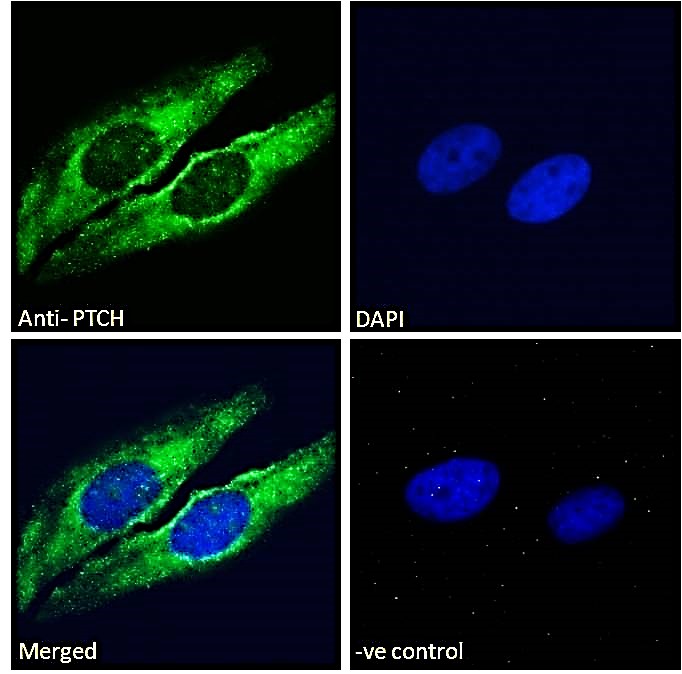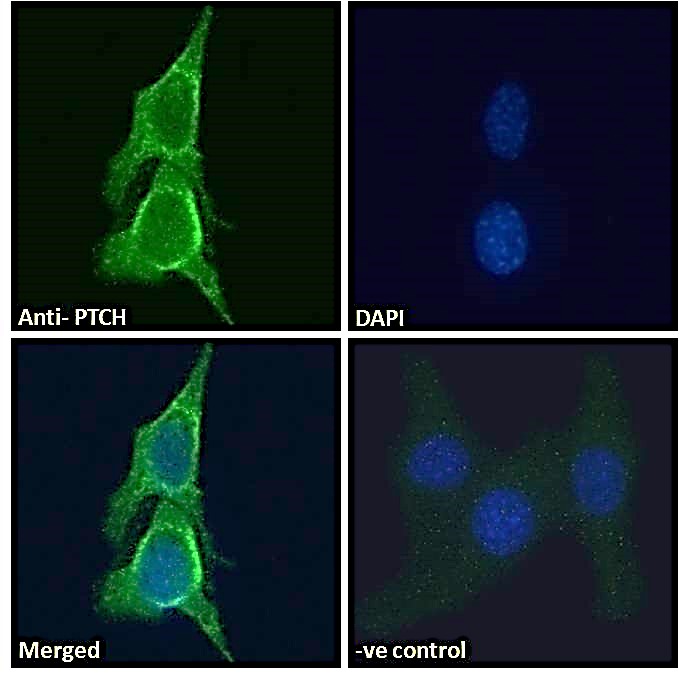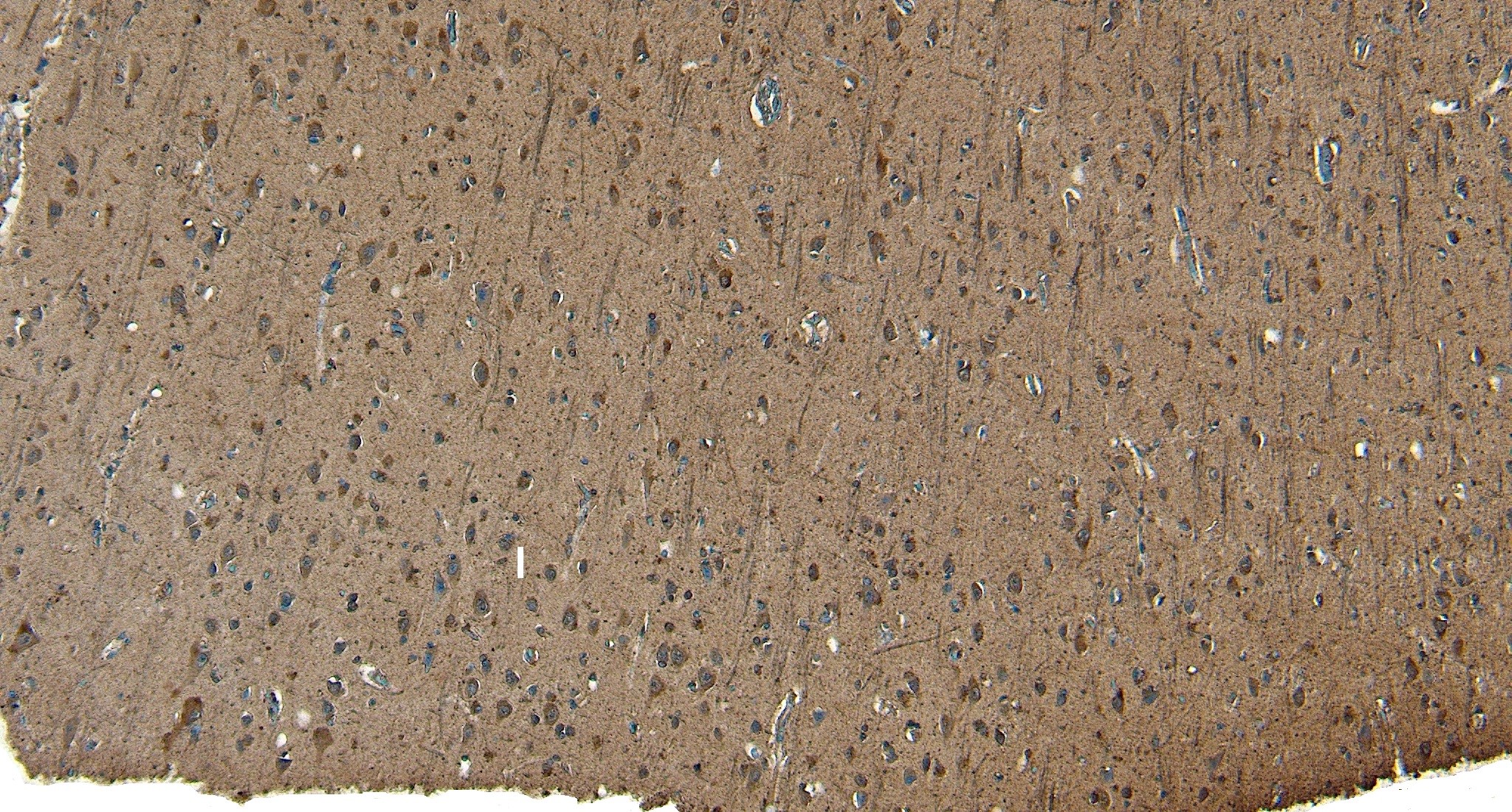Formulation Supplied at 0.5 mg/ml in Tris saline, 0.02% sodium azide, pH7.3 with 0.5% bovine serum albumin.
| |
Unit Size 100 µg | |
Storage Instructions Aliquot and store at -20°C. Minimize freezing and thawing. | |
Synonym / Alias Names PTCH protein -10|PTCH protein +4'|PTCH protein +12b|OTTHUMP00000021710|OTTHUMP00000021709|PTCH11|FLJ42602|FLJ26746|RP11-435O5.3|patched homolog 1 (Drosophila)|PTCH1|patched (Drosophila) homolog|patched|PTC1|PTC|NBCCS|HPE7|BCNS|HGNC:9585|patched homolog (Drosophila)|PTCH | |
Usage Summary Immunofluorescence: Strong expression of the protein seen in the Golgi of HeLa and NIH3T3 cells. Recommended concentration: 10µg/ml. | |
Accession ID NP_000255.1; NP_001077072.1; NP_001077071.1; NP_001077073.1; NP_001077074.1; NP_001077075.1; NP_001077076.1 | |
Blocking Peptide EBP07025 | |
Immunogen Peptide with sequence ELQDVECEERPR, from the C Terminus of the protein sequence according to NP_000255.1; NP_001077072.1; NP_001077071.1; NP_001077073.1; NP_001077074.1; NP_001077075.1; NP_001077076.1. | |
Product Comments This antibody is expected to recognise all reported isoforms. Variants (NP_001077073.1; NP_001077074.1; NP_001077075.1; NP_001077076.1) encode the same isoform. | |
Peptide Sequence ELQDVECEERPR | |
Purification Method Purified from goat serum by ammonium sulphate precipitation followed by antigen affinity chromatography using the immunizing peptide. | |
Shipping Instructions Refrigerated | |
Predicted Species Human, Mouse, Rat | |
Reactive Species Human, Mouse | |
Human Gene ID 5727 | |
Product Grade  | |
IHC Results Paraffin embedded Human Brain (Coretx). Recommended concentration: 8µg/ml. | |
ELISA Detection Limit Antibody detection limit dilution 1:16000. | |
Application Type Pep-ELISA, IHC, IF |
Goat Anti-PTCH (C Terminus) Antibody
$423.00
| SKU | Unit Size | Price |
|---|---|---|
Select a unit size:
Selected References [{"pmid": 24867209, "intro": "This antibody (previous batch) has been successfully used in IHC and IF on Human:", "title": "Expression of Hedgehog ligand and signal transduction components in mutually distinct isocitrate dehydrogenase mutant glioma cells supports a role for paracrine signaling.", "author": "Abiria SA, Williams TV, Munden AL, Grover VK, Wallace A, Lundberg CJ, Valadez JG, Cooper MK.", "journal": "J Neurooncol. 2014 May 28."}] |




